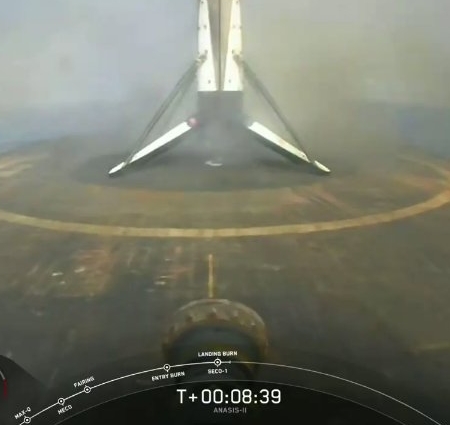Astra ships next rocket to Alaska for launch
Capitalism in space: The smallsat startup Astra has shipped its next test rocket to Kodiak, Alaska, for its planned six-day launch window, beginning on August 2nd.
The new two-stage launch vehicle, which the company calls Rocket 3.1, will take off from the Pacific Spaceport Complex on Kodiak Island. While the liquid-fueled rocket is designed to reach orbit, Astra says it will consider the test flight a success even it doesn’t enter orbit. “Success for this flight means we accomplish enough to make orbit within three flights, which we have defined as at least achieving a nominal first stage burn,” Astra said in June.
Chris Kemp, Astra’s co-founder and CEO, said the company will not be providing a live video stream of the launch to the public, but will release video imagery of the flight after it occurs. “We do not yet employ production, marketing, or communications folks, so our ability to produce a public webcast is limited,” Kemp said in response to questions from Spaceflight Now. “We are focusing all resources on engineering so that we can reach orbit in the next couple of flights.”
The August 2nd launch date is about two weeks later than they had announced in mid-June, but such a delay is not unreasonable for such a rocket test program.
They had attempted to launch an earlier rocket in March, only to have something go wrong during countdown.
Capitalism in space: The smallsat startup Astra has shipped its next test rocket to Kodiak, Alaska, for its planned six-day launch window, beginning on August 2nd.
The new two-stage launch vehicle, which the company calls Rocket 3.1, will take off from the Pacific Spaceport Complex on Kodiak Island. While the liquid-fueled rocket is designed to reach orbit, Astra says it will consider the test flight a success even it doesn’t enter orbit. “Success for this flight means we accomplish enough to make orbit within three flights, which we have defined as at least achieving a nominal first stage burn,” Astra said in June.
Chris Kemp, Astra’s co-founder and CEO, said the company will not be providing a live video stream of the launch to the public, but will release video imagery of the flight after it occurs. “We do not yet employ production, marketing, or communications folks, so our ability to produce a public webcast is limited,” Kemp said in response to questions from Spaceflight Now. “We are focusing all resources on engineering so that we can reach orbit in the next couple of flights.”
The August 2nd launch date is about two weeks later than they had announced in mid-June, but such a delay is not unreasonable for such a rocket test program.
They had attempted to launch an earlier rocket in March, only to have something go wrong during countdown.



